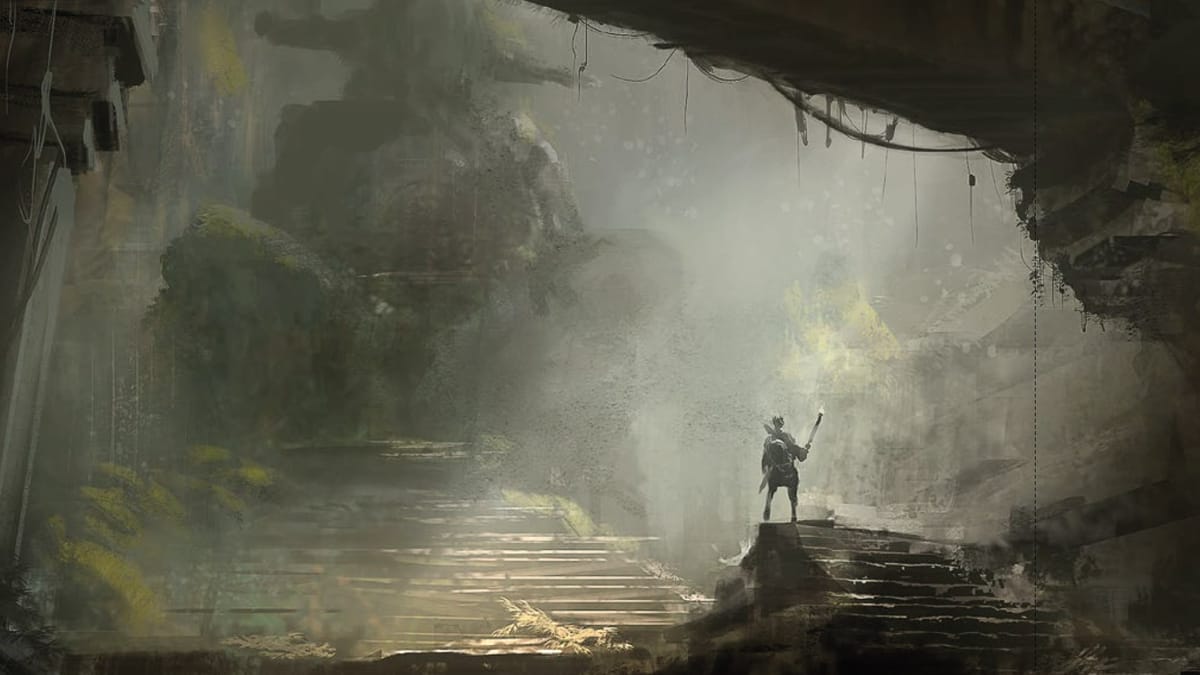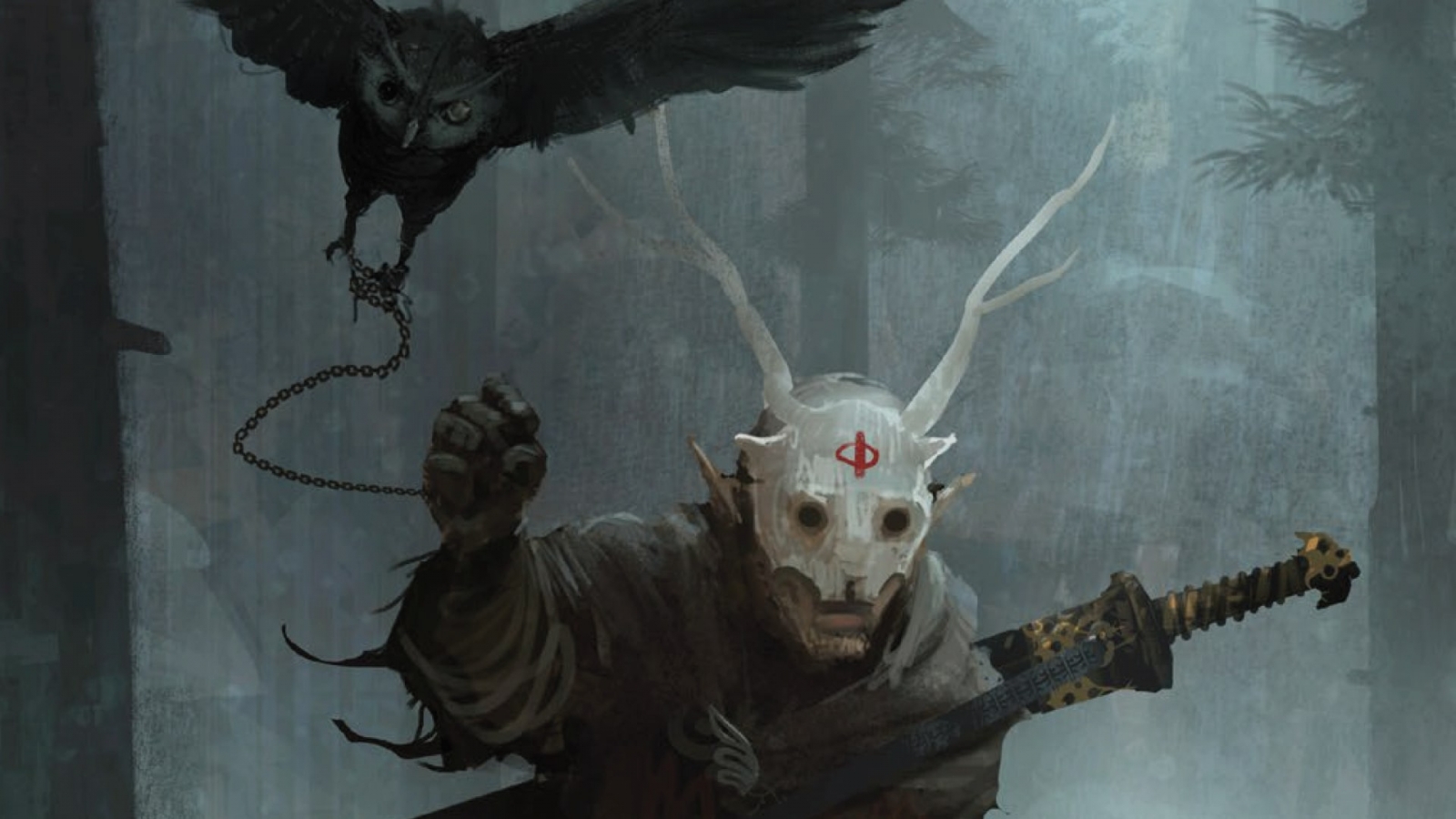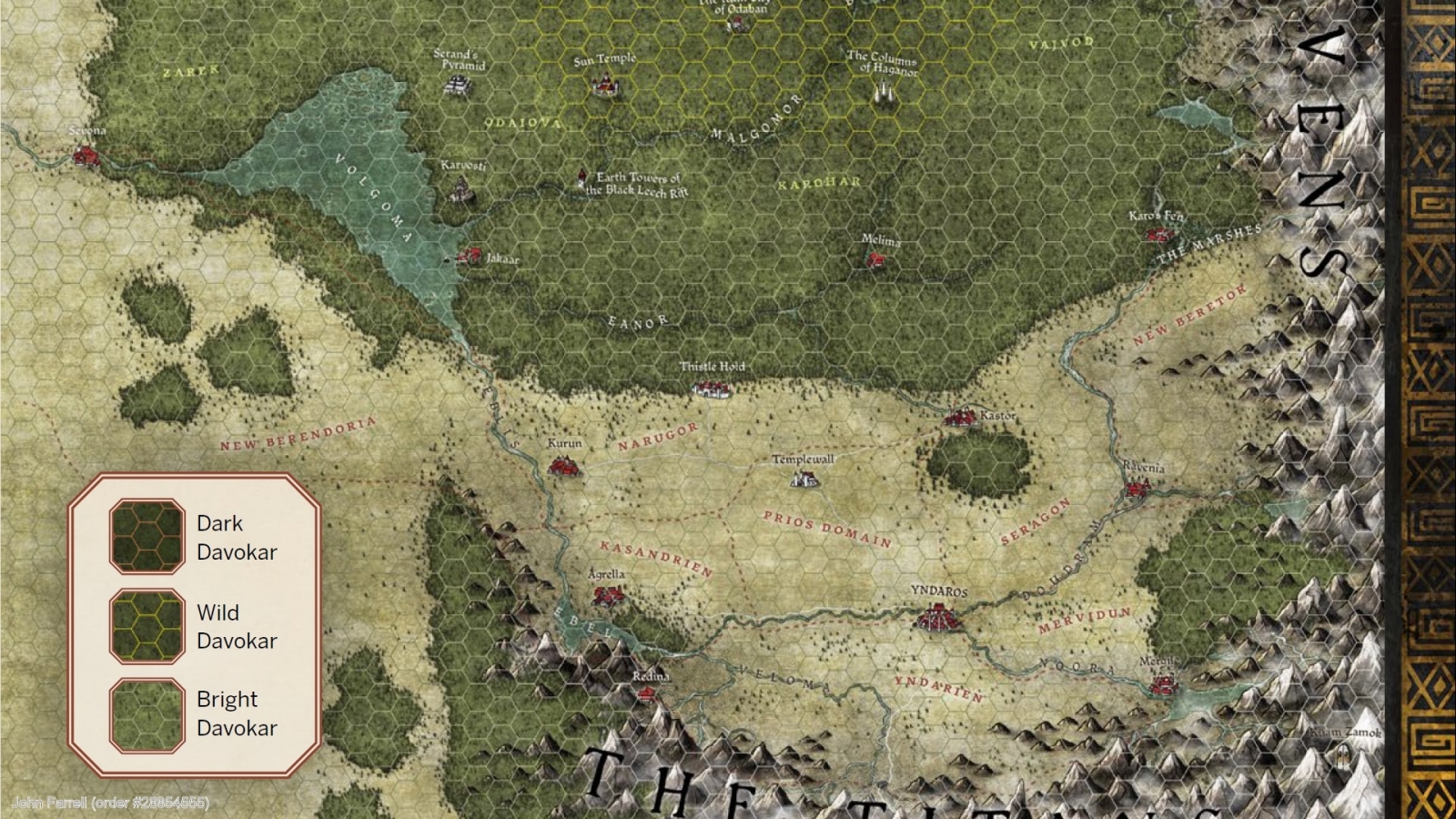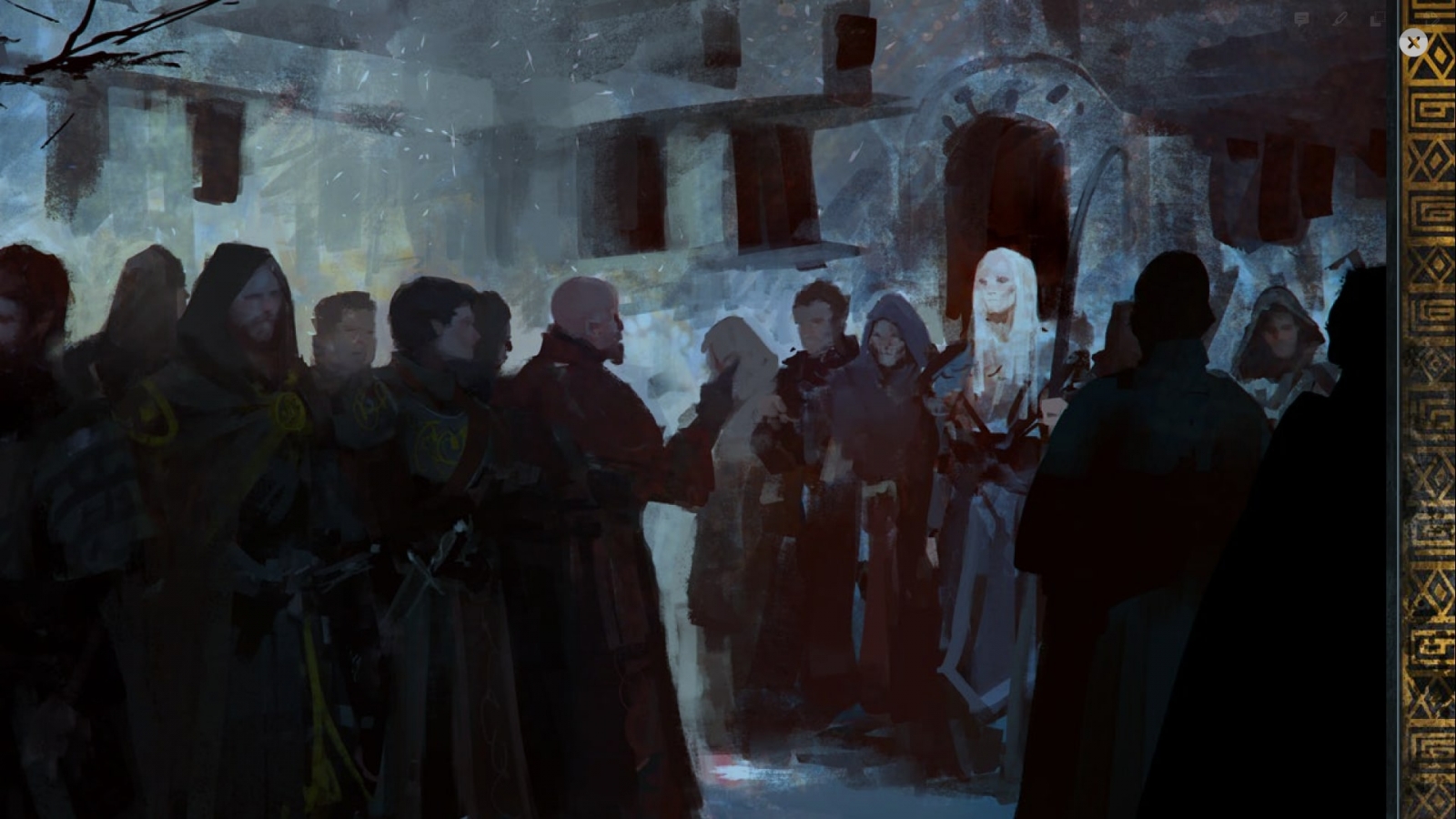
Symbaroum is many things. This dark fantasy game is as terrifying as it is mysterious. It’s as expansive as it is isolating. Its successes come in many forms, and this piece comes at an interesting time in its life cycle; the starter set, recently released, contains starter characters, maps, starter rules, and two adventures, though the content can keep you running for far longer than those two sessions. This set is intended for the game’s base system, but at time of writing has just completed a lucrative Kickstarter for a 5e conversion. The question on many of your minds will be whether it is worth getting this set with the 5e edition soon on the horizon, and to that I can easily answer yes, with the caveat that your efforts may be better spent on the core set itself. That said, there is still a wealth of useful material in this starter set, and it more than justifies its asking price.
The Starter set contains 65 pages of starter rules, 65 pages of two adventures and related advice, starter characters, and four high quality maps. Speaking generally, I occasionally noticed issues with the translation, if minor. Nothing went so far as to be actually grammatically incorrect, but I worried that the phrases were indelicately translated, leading to awkward phrasing. For instance, I sometimes noticed use of passive voice that stuck out. None of the writing is actually bad, mind, and if you don’t spend as much time with the written word you may not notice it at all.
Organization of information is pretty great… most of the time. A few rules are squirreled away in unintuitive places, this being a starter set. Using magic, for example, is not laid out as it should be, taking a surprising amount of rereading and jumping around to understand what amounts to simplistic mechanics. Some rules are in the adventure section instead of the rules book. I think the idea is to create a GM only section, but this doesn’t seem to be a consistent motivation. For instance, exploration rules are in the adventure section rather than the rules section. This makes sense. What doesn’t feel as well considered is information that should be given to the players rather than the GM: their character backstories and personalities. Why these aren’t included in the character sheet section is beyond me.

Symbaroum’s main draw is how its setting is designed to be a perfect fit for roleplaying games. The political and geographic landscape of the game push your characters into their primary goal: exploration of the mysterious forest of Davokar. Replete with strange ruins, fell creatures, and endless mystery, this expanse of wood and magic may hold the key to the ascendency of a waning kingdom. Your player characters are licensed explorers, venturing into the unknown to find their fortunes or, more likely, their ignominious ends. All of these events are centered on a world with fantasy elements that are anything but familiar. The elves are as rare as they are alien. Symbaroum’s use of otherwise “traditional” fantasy elements always come with a twist that create a cohesive but unique whole.
These elements do more than ensure that Symbaroum’s setting stands on its own as a place with infinite mysteries and political struggles. They also all lend themselves directly to the gameplay. Thistlehold, a town on the edge of civilization, is a hub that will set you on your journey into the forest. One shots, hex crawls, and west marches style gameplay are all perfect fits, though nothing prevents you from running a longer campaign and developing Davokar into a complex, living environment.
The other main selling point of Symbaroum is its art. It is by far the game’s greatest claim to fame, and for good reason. These paintings brood with menace, whether portraying the looming vastness of Davokar or the haunted denizens of slouching Thistlehold. No ink I could spill (or, given the medium, electrons) could explain this art’s successes as well as having you look in wonder at the pieces yourselves. I strongly suggest pulling up the site and checking this out if you have even a passing interest. Whether or not you buy the game, they are worth seeing as paintings themselves.
Of course, the visual design goes beyond scene setting. The book cleanly presents information, but all contained within the theme of a tome uncovered in some ancient, moldering library. A darkness creeps in at the edges of the pages, hinting subtly that something may be wrong. There are times when style wins out over substance, and the books contain occasional areas of blank space that stand out, but these are rare and minor issues.
The book’s appreciation for detail carries over to the maps, which do an excellent job of communicating spacial relationships, sometimes feeling like a bird’s eye view of the area. It isn’t all perfect, though. One of the city maps leaves the heavy lifting to its sidebar to make for a more realistic map, but it’s still perfectly usable. Another map is mostly empty, consisting of a few landmarks in a vast expanse of greenery, begging the question of how necessary a map is for that portion of the adventure.

To the North, Davokar extends into vast hexes of unknown opportunity and terror
The characters are well conceived; they cover a variety of character types mechanically and narratively, communicating a dense cross section of who might make their way to Thistlehold and why. The character sheets are not quite ideal, however. They reference a number of abilities or keywords that are present in the core book but not the character sheets themselves, meaning they are not self-sufficient. You will have to look up their abilities, and think of how to use them in combination, on your own.
Symbaroum’s system is not particularly weak, but it is the least interesting of the game’s features. Characters are made up of 8 attributes, all dice rolls consisting of rolling 1d20 and attempting to roll under the relevant attribute. You also have abilities with novice and adept levels of power. Races grant abilities as well, and some characters have access to magic. This focus on limited stats makes monsters easy to track… almost. Opposed actions modify the character’s roll in a way that’s marginally unintuitive: an NPC’s stat above 10 in an attribute subtracts from the player’s ability, making rolling under more difficult. All NPC statblocks are written with this in mind however, requiring a minimum of effort from your GM.
As you might suspect, this starter set contains only a fraction of the archetypes and races of the core set. It also contains some of the magical options, giving you limited access to several schools of magic. Magic is dangerous in Symbaroum, growing corruption within you with overuse and threatening direct damage to a caster who wants to sustain concentration spells. More interesting are the system’s rules for exploration and long term adventure. Hand-waved away by base 5e rules, Symbaroum takes care to walk its GMs through exploration based gameplay, both narratively and mechanically.
During my playtime, I have found Symbaroum’s system effective to its purpose, if not particularly exciting. Characters are fragile, leading your players to proceed with caution into the unknown. Magic has its uses, but comes with a treacherous price. Corruption is the most interesting facet of the rules, as it comes not only from casting magic, but encountering forces or magical items that can change your nature from within. It’s a good narrative tool, but also a way to leverage exploration mechanically: delving too greedily or deep into Davokar without resting can accumulate corruption, ensuring that every discovery can come with a cost.
It strikes me as a shame that Symbaroum is adapting itself to 5th edition rules. I’m sure they will contain many new hacks to fix what I have come to perceive as core flaws of the 5e rule set, but I am sure that the zeitgeist of D&D makes that an obvious financial choice. However, the main reason it stands as a shame isn’t because of my growing distaste with 5e as much as it is the presence of a much better alternative: Free League’s recently released Forbidden Lands, its fantasy exploration based hack of the Year Zero engine. Many things that Symbaroum looks to achieve were exemplified in Forbidden Lands, with the sad drawback that RPGs are so niche that something being strictly superior to D&D doesn’t particularly matter for its sales numbers.

The Adventure book contains more than just the two starter adventures. It begins with a general setting overview, and a writeup of Thistlehold that is surprisingly complete. Given that and the wealth of discussion on exploration, a careful GM could extend the lifespan of this starter set for many moons. It also contains a wealth of monsters with premade stats, to help you along your journey of making the most of this starter set.
The adventures themselves suit their purpose of giving you short jaunts into the forest, though they did leave me wishing they had leaned more heavily on the strengths of Symbaroum. The first adventure is a simplistic set-up, involving one job with some research, exploration, and combat. There isn’t much in the way of decision or roleplay, but it functions as the introduction it’s meant to, showing you unique aspects of the setting and mechanics, and lasting a good session to resolve. As a MINOR SPOILER, it does involve exploring a crypt at one point, which amounts to a mini-dungeon. This might be a little too close to the formula, but the way you find this crypt and the secrets it contains do stray from the usual expectations. More to the point, giving players something familiar for a first adventure is hardly inappropriate. The second is another classic sword and sorcery adventure, with a secret being hunted by multiple groups that the players need to outperform. This does add more to the experience than your usual dungeon crawl, and helps suggest what kinds of secrets you could populate your game with. With environmental effects that will stymie your players on their way, the second adventure does more to teach you about what Symbaroum consists of when pushed into the wild.
The organization of these adventures is not the most complimentary to their use. Each has a lengthy appendix of “optional” events, but many of those events are core to the experience of the stories, while you may choose not to use others at all. They are short enough that this doesn’t hamper the experience of prep too much, but for new GMs it’s a confusing way to present this information and asks extra effort of them to parse out what is necessary and why.

The Symbaroum starter set sits in an awkward place, where its expansiveness and usefulness almost go too far. You see, this starter set costs $35 at time of writing, but the core book is $50. If you end up enjoying the starter set’s experience and decide to go for the full experience, you will be paying a hefty price for what amounts to the most of the core book twice and two short adventures. The adventures are definitely good, and worth playing through, but on their own, even with some nice maps, it doesn’t feel as worthwhile as just getting the core book in the first place. If you were to buy this on its own and stick with it however, it is absolutely worth the asking price. A careful GM could stretch this out for months of entertainment at relatively little cost. It’s an easy recommendation for a product that came out at an odd point, with the 5th edition conversion on the horizon, the core book out for several years now (with impressive support, mind) and Forbidden Lands sitting coquettishly in the corner waving a fan at you. I liked this starter set. It was a great introduction and I had a good time playing through it. Because of its simplicity, new players and GMs would be very well situated with this. At the same time, more experienced gamers should take their attention directly to the core book, new or old.
Symbaroum starter set
Good
Symbaroum’s starter set is a complete package, getting you up to speed with the factions, fears, and opportunities present in Davokar. It does an excellent job setting up its mysteries and communicating them to a new audience. So well that you may want to jump straight over this to the core, but as an introduction this contains a generous wealth of resources to put you on the road to discovery.
Pros
- Magnificent, haunting portraits of the forests of Davokar
- As much or more support for exploration than combat
- A setting perfectly designed for roleplay
Cons
- Organization is sometimes awkward
- Many of the best features are found in the core book
- Core system is functional, but not often more
